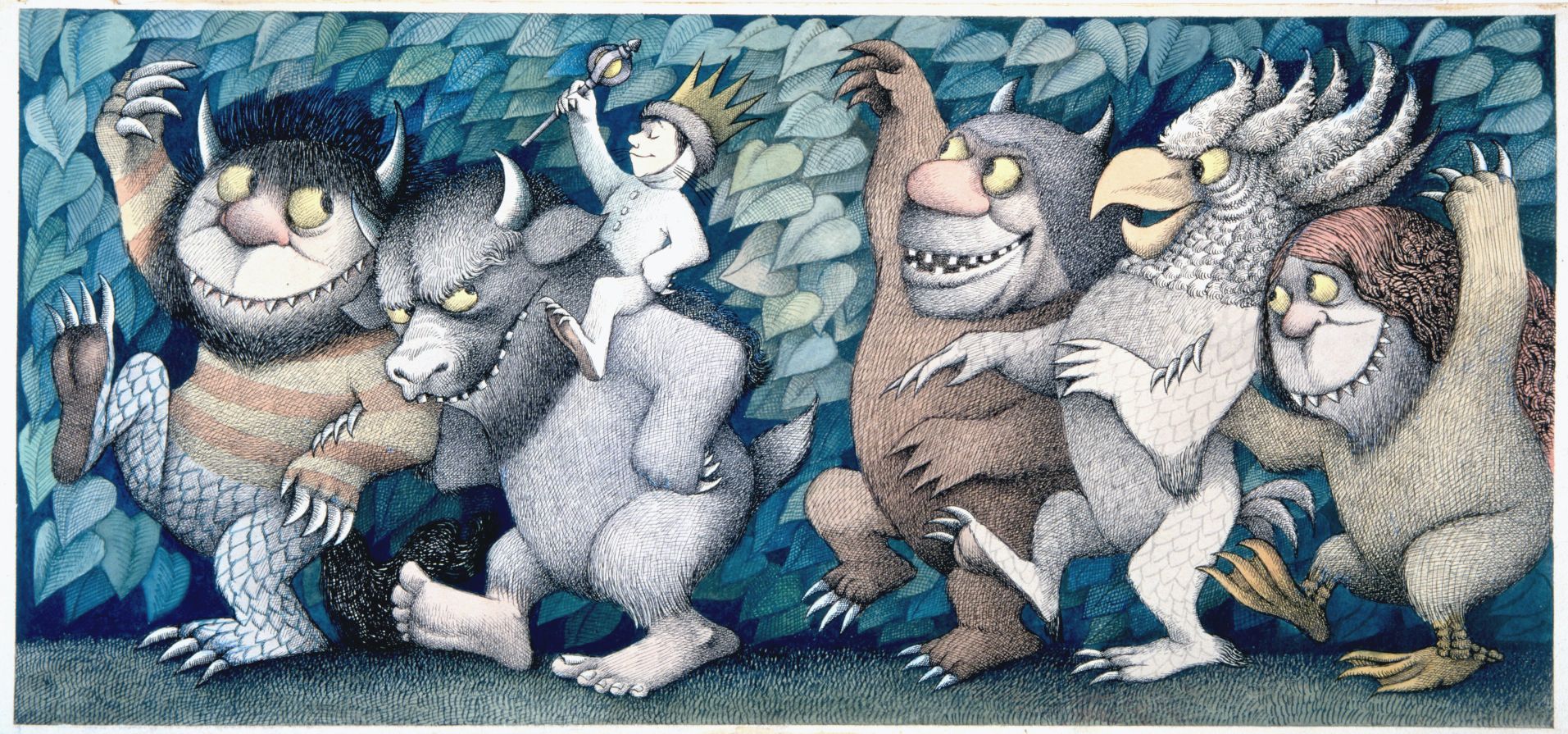

Where The Wild Things Are is a story that shows children's resilience through their “spirit” and “pluck”.


Going along with this, Mary Pols of Time magazine wrote that "hat makes Sendak's book so compelling is its grounding effect: Max has a tantrum and in a flight of fancy visits his wild side, but he is pulled back by a belief in parental love to a supper 'still hot,' balancing the seesaw of fear and comfort." Scott Pollard, both English professors, assess the role that food plays in the book, arguing that food is a metaphor for Max’s mother’s love based on the idea that Max comes home to a “still hot” supper, which suggests that his mother “loves him best". He indicated that the three books are "all variations on the same theme: how children master various feelings – danger, boredom, fear, frustration, jealousy – and manage to come to grips with the realities of their lives." Fundamental to Sendak's work for over fifty years is his trust in the validity of children's emotions. Lanes's book The Art of Maurice Sendak, Sendak discusses Where the Wild Things Are along with his other books In the Night Kitchen and Outside Over There as a trilogy centered on children's growth, survival, and fury. When working on the 1983 opera adaptation of the book with Oliver Knussen, Sendak gave the monsters the names of his relatives: Tzippy, Moishe, Aaron, Emile, and Bernard. As a child, however, he saw them only as "grotesques". These relatives, like Sendak's parents, were poor Jewish immigrants from Poland, whose remaining family in Nazi-occupied Europe were killed during the Holocaust while Sendak was in his early teens. Sendak, as a child, had observed his relatives as being "all crazy – crazy faces and wild eyes", with blood-stained eyes and "big and yellow" teeth, who pinched his cheeks until they were red. He replaced the horses with caricatures of his aunts and uncles, caricatures that he had originally drawn in his youth as an escape from their chaotic weekly visits, on Sunday afternoons, to his family's Brooklyn home.
#Wild rumpus books how to
Shortly before starting the illustrations, Sendak realized he did not know how to draw horses and, at the suggestion of his editor, changed the wild horses to the more ambiguous "Wild Things", a term inspired by the Yiddish expression "vilde chaya" ("wild animals"), used to indicate boisterous children. The story was supposed to be that of a child who, after a tantrum, is punished in his room and decides to escape to the place that gives the book its title, the "land of wild horses". Soon after, he began work on another solo effort. In 1956, he published his first book for which he was the sole author, Kenny's Window (1956). Sendak began his career as an illustrator, but by the mid-1950s he had decided to start both writing and illustrating his own books. Upon returning to his bedroom, Max discovers a hot supper waiting for him.

Yet, Max refuses and the creatures go into a fit of rage as Max sails away back home. To the Wild Things' dismay, they did not want him to go. However, he starts to feel lonely (and homesick) and decides to give up being king and return home. Finally, he stops them and sends them to bed without their supper (they get a taste of their own medicine after Max was disrespectful to his mother earlier on). After successfully stopping and intimidating the creatures, Max is hailed as the king of the Wild Things and enjoys a playful romp with his subjects. The Wild Things try to scare Max, but to no avail. Max's bedroom undergoes a mysterious transformation into a jungle environment, and he winds up sailing to an island inhabited by monsters, simply called the Wild Things. The story focuses on a young boy named Max who, after dressing in his wolf costume, wreaks such havoc through his household that he is sent to bed without his supper (after his mother calls him, "WILD THING!" to which he responds, "I'LL EAT YOU UP!").


 0 kommentar(er)
0 kommentar(er)
